![]()
![]() From Paul
Geithner's Triumph Spitfire
From Paul
Geithner's Triumph Spitfire
Links, References
& Technical Information
Adapting
TR7 Wheels to the Spitfire
(The
explanation of hubcentric and lugcentric wheels was
excerpted from the SportsSix.info
site)
HUBCENTRIC
and LUGCENTRIC RIMS:
The
rims used on the TR7 and TR8 are 'Hubcentric', and differ
from those used on other Triumphs which are 'Lugcentric'. The
difference is to
do with the way the rim is located on the hub; its fairly fundamental
and
should be understood if you intend to use TR7 or TR8 wheels on a
previous
model.
Hubcentric
(TR7 & TR8):
With this method, the central hole
in the rim sits directly on a machined tapered (usually)

surface
which is part of the hub itself and protrudes through
the hole. The load-bearing surfaces are the inner edge of the rim
center
cut-out and the hub taper (indicated in RED).
When using a hubcentric setup, the only
function of the lug nut is to press the rim against the face of the
hub, and
not to center the stud within its hole. There is usually a gap around
the stud
and lug hole which reduces the chance of sheared studs.
From
a wheel centering point of view, this system is almost
perfect. Provided the hub has been turned in one operation, the rolling
center
can be presumed to be identical to the hub center; therefore, provided
the outer
edge of the rim and centre cut-out are concentric, the wheel will sit
properly.
Lugcentric
(All other models):
This means that
when the rim is mounted on the hub, it is centered by means of tapers
on the
lug nuts and lug holes.

The
load-bearing surfaces are between each lug and its seat on
the taper (indicated in BLUE).
The center hole in the rim effectively 'floats' around the
grease cap without touching it.
This
system is often considered the inferior method for 2
reasons. Firstly:
studs are usually fairly thin in comparison
to the hub center shaft itself, and are prone to bending, stripping and
shearing under stress. Secondly:
When hubs and rims are produced, there is a
possibility that the lug or stud holes might be drilled slightly off
center,
and this means that when bolted on, the rim will likely not be
concentric with
the hub. Its probably worth saying that even if the studs, holes and
tapers are
perfectly positioned, a slightly bent stud will still result in an off
center
wheel.
Adapting
TR7 steel wheels to the Spitfire:
Use a countersinking bit to create a bevel or cone seat in the wheel's stud holes to receive your tapered seat Spitfire lug nuts. This and the use of Spitfire lug nuts converts the TR7 wheel from hubcentric to lugcentric. Be careful to not drill too far; do not drill the countersink beyond the depth of the existing hole or the lug nuts will poke through the wheel and will bottom-out on the hub before seating on the beveled seats you have created.
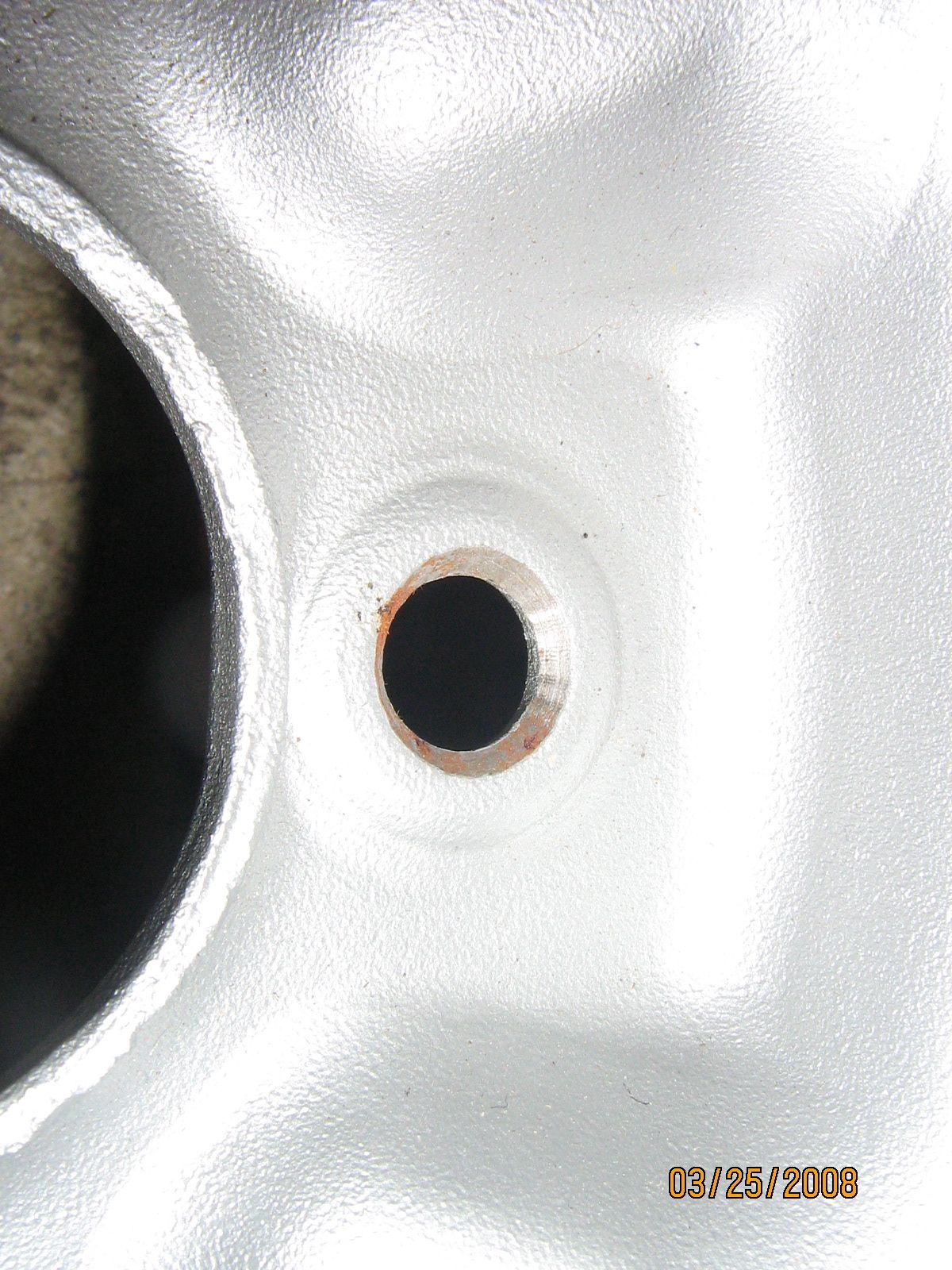
Furthermore, it is a good idea to drill-out the holes in the lug nuts another 3/16 inch to make sure they don't bottom out on the ends of the studs before seating on the wheel. Use a 21/64 inch bit for this, which will not hurt the threads (as long as you are careful of course--use a drill press if you have one).
Interestingly,
I have discovered that there are at least two
varieties of
TR7 steel wheels. They
look virtually
identical, but the shape and depth of the dish of the center
sections differ. One is "dished" 1/8 inch deeper and
has 1/8 inch less positive offset than
the other, i.e.,
backspacing is
4 1/4 inch for
the "deep dish" ones and 4 3/8 inch for the "shallow dish" ones. The "deep dish" 4 1/4 inch backspaced
wheels are stamped with "RKC1513" and a little Dunlop logo followed by "1180"
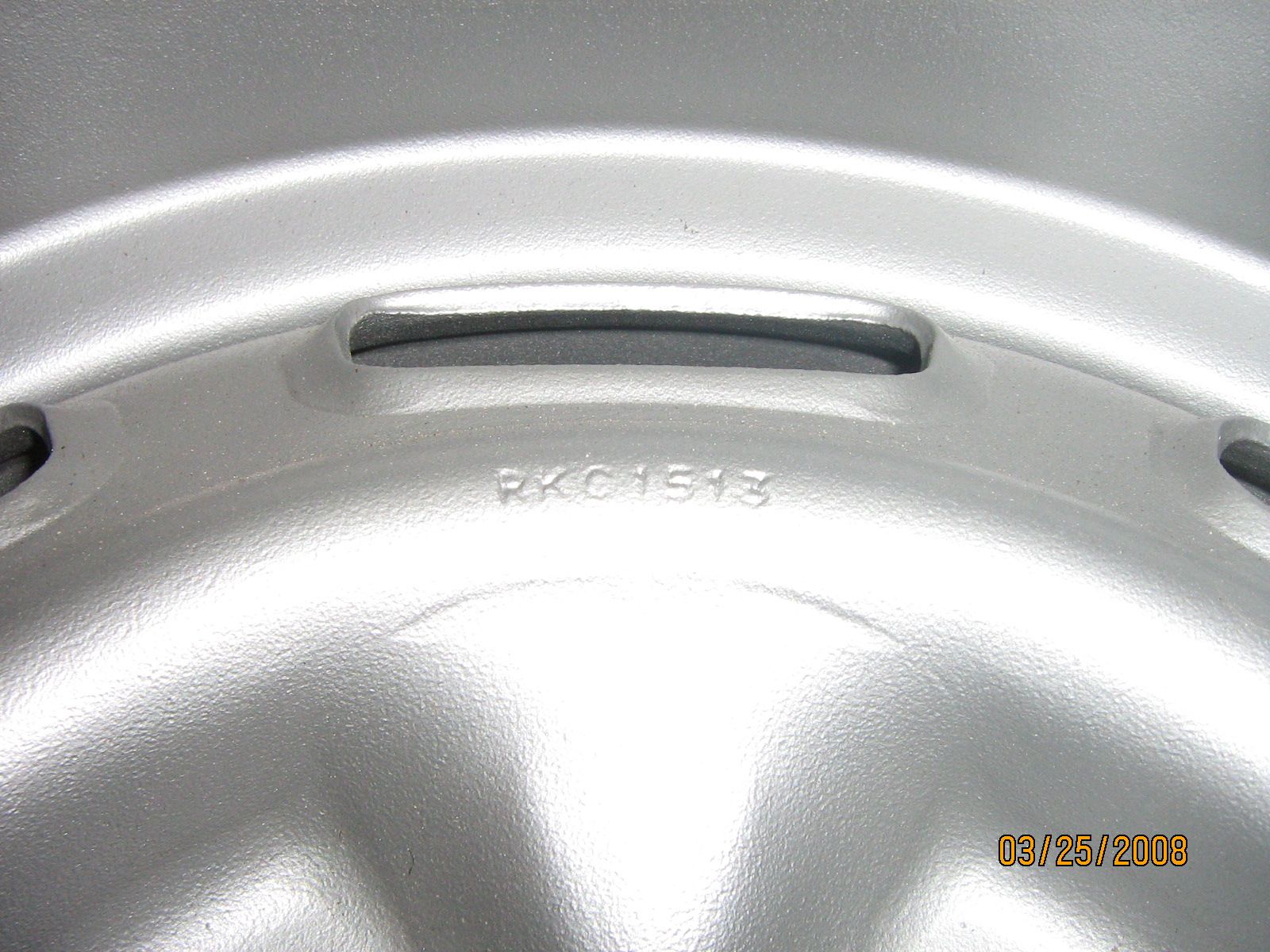
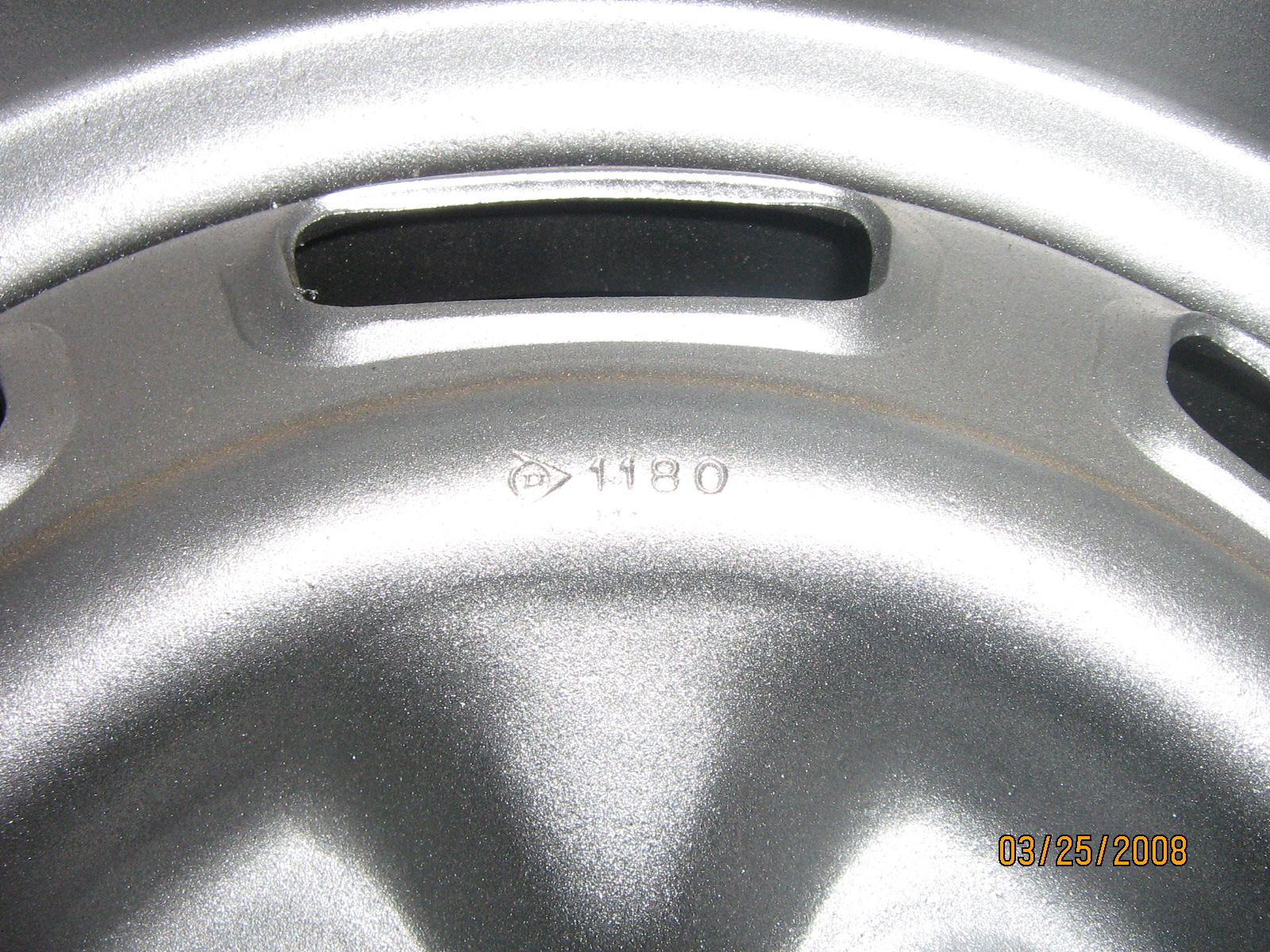
while the "shallow dish" 4 3/8 inch backspaced ones are stamped with "RKC0187."
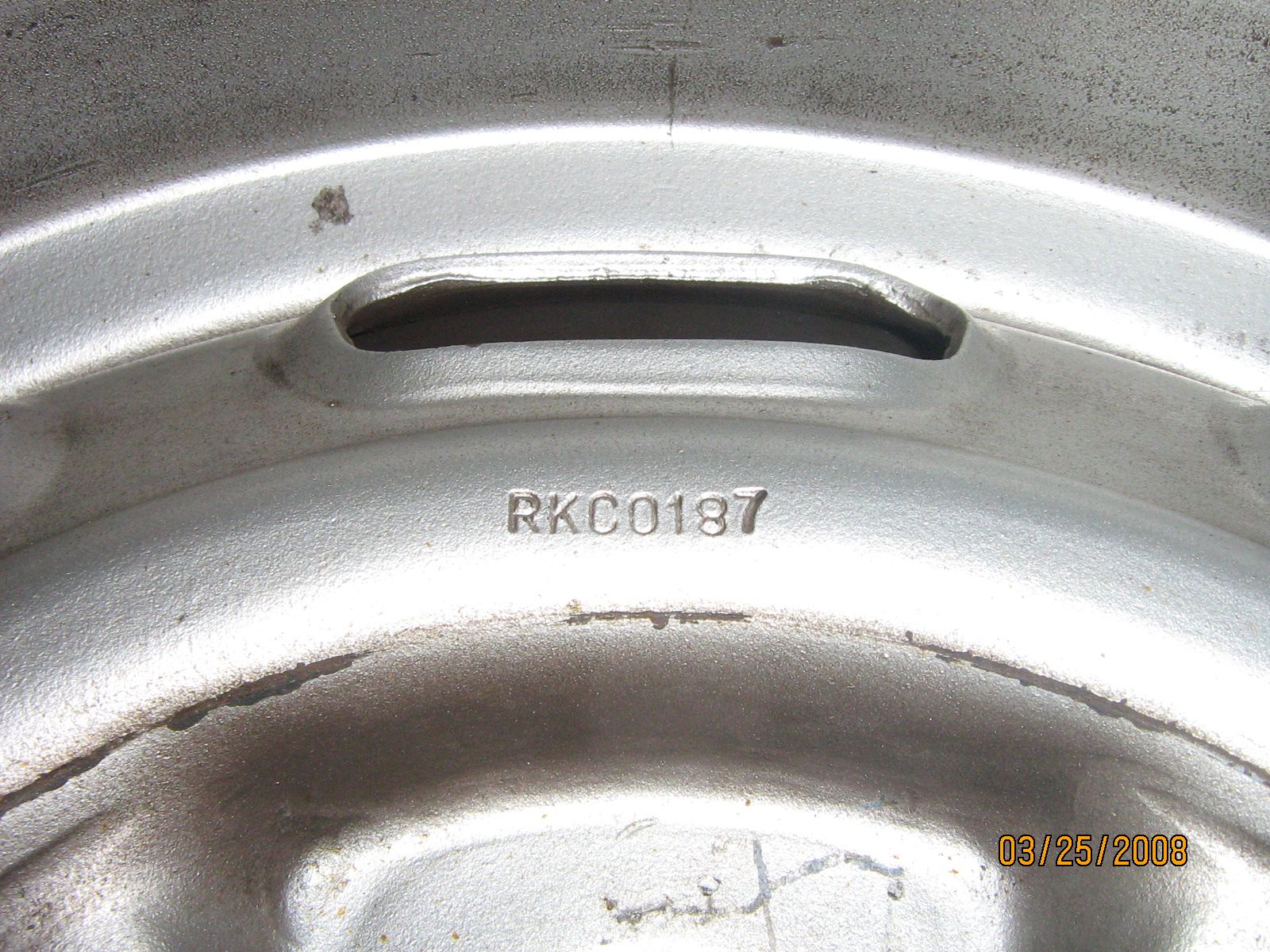
These markings are found on the rounded ridge of the wheel center section,
where the periphery of the hub cap seats against
the wheel. It seems best to use
all one version of wheels to avoid mixing up the offsets (mixing
different offsets on the same end of the car
might affect tracking). Moreover, if you want to use the
Spitfire plastic hub caps, choose RKC0187 "shallow dish" 4 3/8
inch backspace wheels. The shallower dish allows the Spitfire lug nuts
to seat against the wheel just as they contact the hub caps. With the
deeper dish wheels, the lug nuts will contact the hub caps too soon and
if you continue to torque down on the nuts to seat them fully, you'll
crack the hub caps. I like using my Spitfire plastic hub caps with the TR7 wheels, so I made sure
I got matching sets of "shallow dish" wheels. Here's
a photo of a RKC0187 wheel with a 185/60-13 tire and Spitfire plastic
hub cap mounted with Spitfire lug nuts on one of my Spitfires:
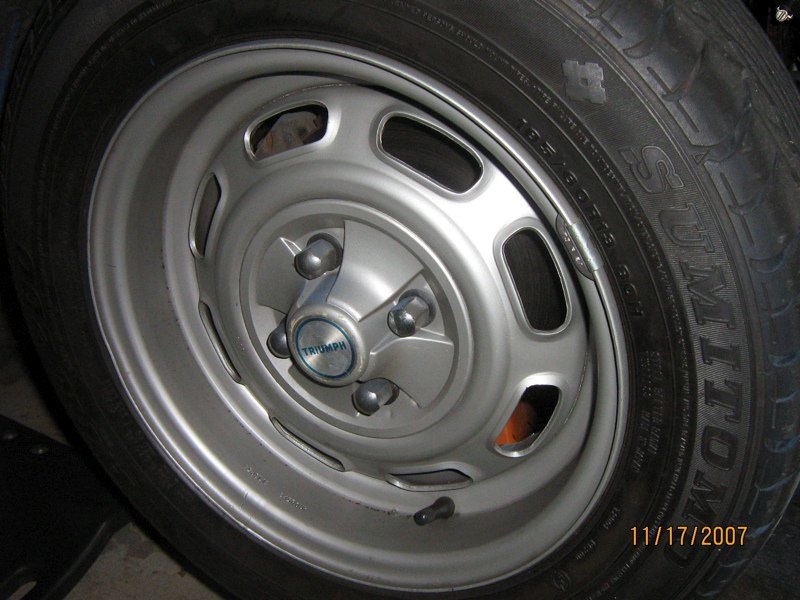
I
ran 13x5.5 inch factory steel TR7 rims with 185/60-13 tires on
my 1978
Spitfire for
nearly 12 years. During
that time,
I drove the car to work fairly frequently and drove in several
autocrosses. I am
currently
running this setup on my 1968
Spitfire. So
evidently,
converting the TR7 wheels from hubcentric to lugcentric for use on your
Spitfire can work, even though lugcentric is considered inferior to
hubcentric mounting.